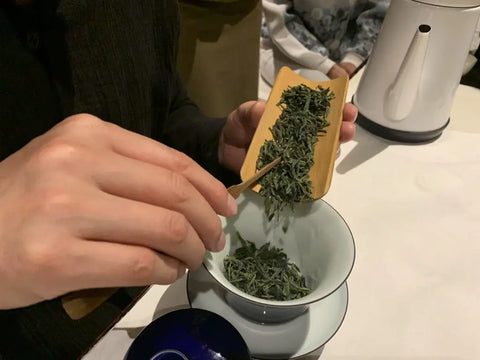
The Difficult Art of Roasting Lu An Gua Pain Green Tea
You probably already know that roasting is a process used in making tea, especially for oolong teas. Green tea, on the other hand, is not roasted, rather, pan-fried in the wok as a Kill the Green process. Since green tea is cherished for its freshness, you probably would not think that roasting would be a process used in making a green tea. Well, there is an exception. In fact, roasting plays a very important role in the quality of making one particular green tea. Do you know which tea that could be?
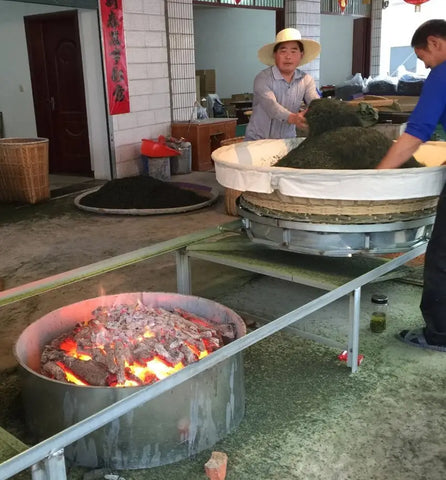
This tea has a long history and was once mentioned in Tea Saint Lu Yu's first tea book The Classics of Tea from the Tang dynasty. This tea only uses mature leaves, no buds and small tender leaves. The traditional method of making this tea is the most complicated among all the green teas. The tea is roasted three times in the final stage of its tea making process. The first roasting process, called Lao Mao Huo meaning preliminary fire roasting, takes place after the tea leaves have completed the “kill the green” process. They are placed in a bamboo basket and put on an 80-100 Celsius degrees open charcoal fire for a few minutes and then moved from the fire to rest. The tea workers then gently mix the leaves to cool them down and then repeat the steps. After roasting, the tea leaves have shrunk into the shape of a melon seed. The second roasting is like the first, but at a slightly higher temperature. This process intends to further dry out the leaves and increase the fragrance and taste. Once this step is done, the tea leaves rest in a bamboo basket for several days or so.
The third roasting is the most labor-intensive of them all. As you can see in the picture above, the fire is burning strong and hot, thus requiring a quick movement of the basket back and forth, and immediate flipping over the tea leaves, all in less than 5 seconds. The locals call it La Lao Huo, meaning strong fire roasting. It usually requires a group of several workers handling several baskets at once. While one basket is pulled away from the fire, another basket is immediately pulled over the fire, and so forth non-stop. The workers have to constantly move the baskets back and forth, flipping over the tea leaves inside the basket. Can you guess how many times each basket is pulled back and forth? Repetitively more than 130 times. In the old days, for each worker, it would be the equivalent of walking 10 miles each day. Nowadays, they use tracks to push and pull the baskets. The fire temperature is also important as it affects tea’s bitterness and fragrance. In the process, the composition of the leaf constantly evolves and after more than 130 roasts, the leaves are sublimed and become frosted with white tiny crystals, indicating that the roasting process is finally done.
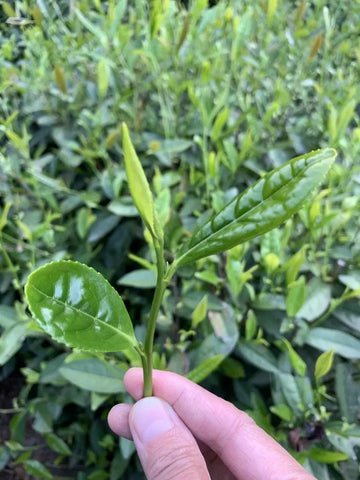
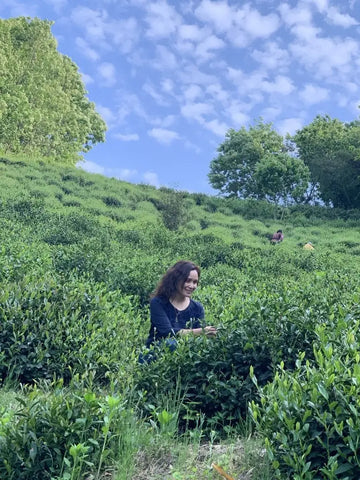
After reading this far, now you know this special tea is our beloved Liu An Gua Pian green tea. The roasting process is extraordinary, placing the pre-processed loose leaves over a raging fire and giving the tea a rebirth, as a phoenix through the fire. Indeed, during the Ming dynasty, the peak green tea skills were developed and spread vastly throughout the country. There is a book that records that Liu An’s flat leaf tea is the best.
Let’s put this into context. Liu An Gua Pian is like the Big Red Robe or Wuyi Rock oolong tea of green teas. They still carry on the full tradition of this tea making method, putting a lot of care and dedication into the process. It is the art of roasting, the very coordination and manipulation of the fire and the leaves which forges its unique character and lasting fragrance, unlike any other. This roasting process produces a more complex flavor and gives the tea a much longer shelf life than your typical green tea. In fact, like Wuyi rock oolong, it can be consumed over a much longer period of time and the quality is preserved much longer than other green teas.
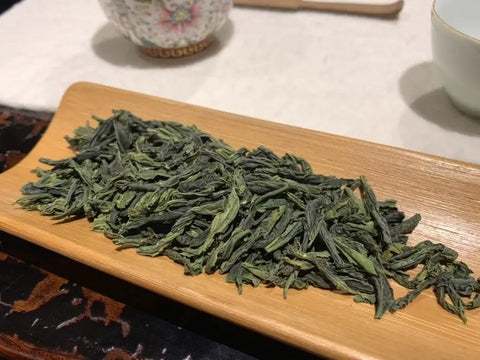
However, great tea comes with great labor and dedication. Liu An Gua Pian is the result of one of the most labor-intensive efforts and masterful techniques as compared to other green teas, from the selective plucking of mature leaves to the non-stop fire roasting process. Because of the high cost of labor and longer processing time, a lot of machine-made Gua Pian tea has entered the market. However, the quality of machine made vs. handmade are very different and the taste is not the same. Not all teas are made equal. Even though great labor is put into it, only masterful skills make a tea exceptional. We are lucky to be able to source this exceptional tea from Qitou mountain of Jin Zhai County, the best of the best from the core producing region. Every cup of our tea contains the essence of history and human touch. Let us cherish every cup.
